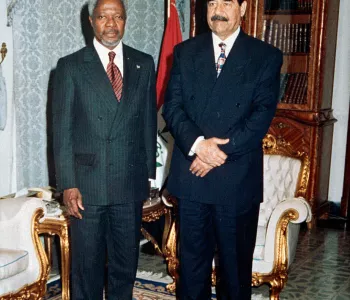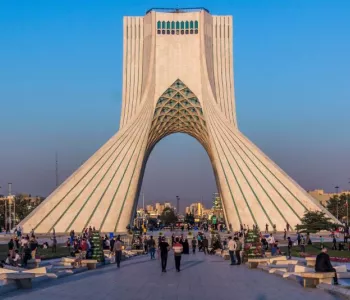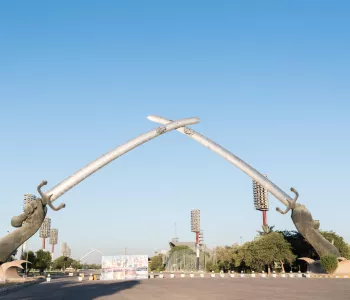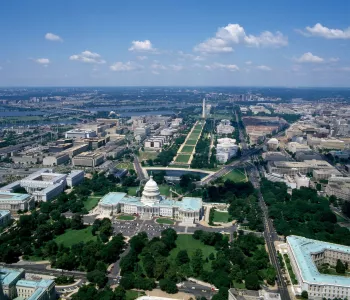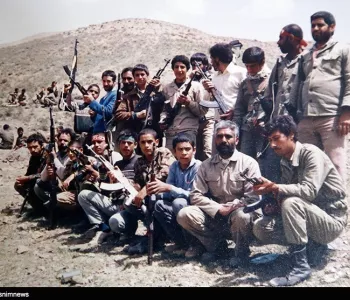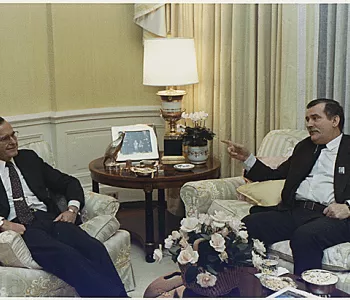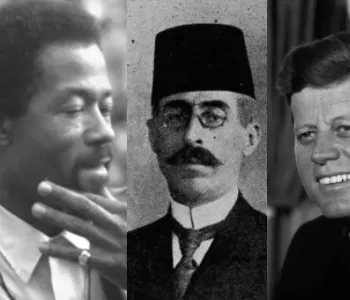February 1, 1979, is a key date in the history of modern Iran in general and of the Iranian revolution in particular. On that day, two weeks after Muhammad Reza Shah Pahlavi (1919-1980) left Iran, Sayyid Ruhollah Musavi Khomeini (1900-1989) returned after 14 years in exile—part of a life told in Vanessa Martin’s Creating an Islamic State: Khomeini and the Making of a New Iran (2014).
On that day, the Shi‘i Ayatollah whom many called Imam assumed Iran’s leadership, as shown in the below speech he gave upon deplaning in Tehran. But that day was not a cut; it was not simply the end of the shah and of the revolution and the start of Khomeini’s rule. Rather, it was a day suspended in mid-air. It was a day where the just-past overthrow of the shah touched the uncertain future of the revolution: a liminality and vulnerability that shines through Khomeini’s speech.
It is for that reason that I have chosen this text, not simply because Khomeini here as in virtually all his pronouncements stressed the need to rid Iran of foreign agents led by the United States. Yes: the revolution had an ultimately clear end, the Islamic Republic, which became official following a referendum in December 1979. And yes: Khomeini was an influential maker of this hybrid theocratic-republican governmental system that came out of the revolution. First emerging in 1963 in the clerical city of Qom as an outspoken critic of the shah surrounding a raft of social reforms, he doubled down on his critique over the US-Iranian status of force agreement of late 1964. As a result, the shah had him expelled to Turkey, from where he in 1965 was able to move to a transnational Shi’i clerical center: the Iraqi city of Najaf. There, he by the early 1970s expanded his critique of the shah’s person to a critique of the very institution of the Iranian monarchy, and began to talk of a clerically led government.
This was a far-reaching change in Shi‘i religious thought, as Hamid Dabashi showed in Theology of Discontent: The Ideological Foundations of the Islamic Republic of Iran (1993). However, those ideas took their final form not before but during and in interaction with the revolution, when Khomeini resided in Najaf until October 1978, then in Neauphle-le-Château, near Paris, and from February 1979 in Tehran. Moreover, Dabashi’s work showed how other intellectuals shaped the revolution, too. And Khomeini adapted certain Third-World leftist populist ideas and terms—a process analyzed in Ervand Abrahamian’s Khomeinism, which exemplified secular scholars’ emphasis on how non-clerical ideas and groups like the Mujahedin-e Khalq or Fada’iyin-e Khalq helped bring about and shape the revolution.
Finally, recent works that open a new generational-historiographic chapter, like Arang Keshavarzian and Ali Mirsepassi’s edited volume Global 1979: Geographies and Histories of the Iranian Revolution (2021) and Naghmeh Sohrabi’s “The ‘problem space’ of the historiography of the 1979 Iranian Revolution” (2018), are moving beyond a scholarly focus on revolutionary causes and outcomes and on distinctive actors and their failure and success. Instead, they probe the fundamental imprevisibility and contingency of an unfolding revolution; they stress overlaps and contacts between actors and ideas; and they tease out transnational relationships and global contexts without creating a clear a priori distinction between the domestic and the global, perhaps especially regarding the question of the place and role of Iran’s 1970s in the longer arch of decolonization.


